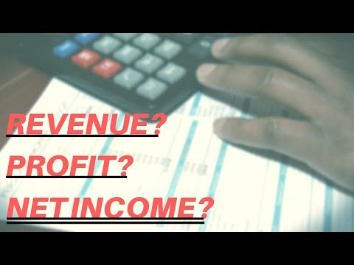Content
In months where both the failure-to-file and failure-to-pay penalties apply, the failure-to-file penalty is reduced by 0.5% (the same amount as the failure-to-pay penalty). So instead of a 5% failure-to-file penalty for the month, you’ll be charged 4.5%. The IRS will charge you $500 for every month you don’t file your taxes. Note that S corporations and Partnerships do not pay taxes on their income.

The only exception is a 30-day extension to file a return without interest or penalty for employers quitting business. You can file an extension for your taxes by submitting Form 4868 with the IRS online or by mail. Filing an extension for your taxes gives you additional months to prepare your return no matter the reason you need the extra time. The How And When To File An Extension On Business Taxes failure-to-file penalty is normally 5% of the unpaid taxes for each month or part of a month that a tax return is late. The failure-to-pay penalty is 0.5% per month or part of a month. When the two penalties are combined, the late filing penalty drops to 4.5%, so that the total penalty is 5% for each month or part of a month the return was late.
When can I start filing taxes for 2023?
As with any financial product or service, carefully consider all fees and charges, as well as timing, to help make an informed decision that’s best for your situation. Contributions to a traditional IRA can be tax-deductible. You have until the tax deadline to contribute to an IRA — either Roth or traditional — for the 2023 tax year. The maximum contribution amount for either type of IRA in 2023 is $6,500, or $7,500 if you’re age 50 or older.
- When you file your taxes this year, you may have a lower refund amount, since some tax credits that were expanded and increased in 2021 will return to 2019 levels.
- Often referred to as long-term payment plans, they allow you to make payments on your taxes in monthly installments.
- Filing for an extension by April 18 gives you until October 16 to finalize your returns.
- If you’re an individual or sole proprietorship, simply file Form 4868 to get an automatic six-month extension to file a completed tax return.
- The type of form you use depends on the type of business you run.
- The free fillable forms allow you to file electronically, but provide limited guidance and calculations.
The extension payment must be at least 90 percent of the tax that will be due with the report. There are many reasons to file a business tax extension, but one of the best is that it gives you time to review expenses and optimize your tax savings. The process is easy, and business owners often use the extra time to maximize tax benefits. This is how to file a business tax extension for your 2022 taxes. In many cases, unless you owe state taxes, your federal automatic extension can be used to extend your state return(s) as well. Refer to the tax form instructions or tax help for your state(s) before you request a state extension.
Want More Helpful Articles About Running a Business?
An extension only gives you more time to finish the paperwork, not more time to pay. When some taxpayers ask, “How do I get an extension for my taxes? ” they might be thinking of the taxes owed and not the return itself.
- If your business is organized as a partnership, your income tax return or extension is due by the 15th day of the 3rd month after the end of your tax year.
- After you file the extension, you’ll have until October 15 to gather your documents and finish your filing.
- The IRS requires that certain information returns, such as the 1099-NEC, 1099-K and 1099-INT, be issued or mailed by January 31.
- You may have to complete a “Collection Information Statement” (Form 433-F) in order to request this relief.
- If you use a fee-based tax preparer and you don’t have the necessary filing fees, some tax preparers may offer you a refund anticipation check (RAC).
- Visit Understanding penalties and interest for more information.
If you haven’t done so already, now’s the time to plan and take action. While January to April is called “tax season,” the big “tax day” is usually April 15. If that falls on a holiday or weekend, it moves to the next business day. The extended due date is 45 days after the original due date of the final report. See the Type of Extension section below for important details and to learn how to request an extension. Additionally, extensions will not be given if requested after the due date.
Classifications of LLC
Most individual taxpayers will file their returns electronically this year. The figure has topped 80% in recent years, as the IRS has made it easier to do, and the use of tax preparation software has become even more widespread. However, not paying on time or enough, or failing to file altogether, may https://kelleysbookkeeping.com/ cost you. If you’re holding off on filing because you can’t pay your business taxes right now, don’t let that keep you from filing. The IRS can charge penalties and interest if you pay your taxes after the original due date, so estimate what you owe and make a payment with your extension request.

The due date and payment date for returns and payments are extended for a specified period announced by the IRS unless we publicly announce otherwise. This extension covers filing tax returns, paying tax (including estimated tax), and filing tax extension forms with us. Use Form 7004 to request an automatic 6-month extension of time to file certain business income tax, information, and other returns. Filing taxes for your business can be overwhelming and you might need a bit more time. Luckily, the IRS allows for both individual and business tax extension. This will give your business more time to file their tax returns.
Alcohol Taxes
If you are one of the estimated 100 million people that are eligible to file your tax return for free you can keep all of your refund money by choosing one of three options. Users will also have the opportunity to sign up to receive due date reminders for select account types. MyPATH will send a reminder to file a return or make a payment 5 days before the due date. The amount of unclaimed refunds due for transfer if not claimed from LDR is $11,574,249.48. You won’t lose your refund for filing late as long as you file within three years of the original due date. If you don’t file within three years of the deadline, you can lose your tax refund.
- The end of the 2023 tax season for most Americans is April 18, 2023.
- However, not paying on time or enough, or failing to file altogether, may cost you.
- If you are a sole proprietor filing a schedule C, then you will submit a 4868 form.
- Make sure you get W2 forms from all your employers and enter that information into the tax form when you fill it out.
- The sooner you file, the sooner your refund can be processed.
- Note that if you are using a fiscal year that isn’t the calendar year, your tax filing deadline is different and depends on your business entity and when your fiscal year ends.
For example, if your partnership is a calendar year taxpayer, with a December 31 year end, you must file a 2022 tax return or extension request by March 15, 2023. Most taxpayers face state income taxes, which are typically also due by the federal tax deadline. Your state’s tax department is the easiest way to determine your state income tax deadline and how to file for a state tax extension.
You can use your personal computer or have your tax preparer do this for you. You can also use IRS Free File which allows you to file an extension and request payment options online. All major tax software applications should be to allow you to file an extension using either Form 4868 and Form 7004. When you log on to prepare your return, there will a tap or option for filing an extension.
